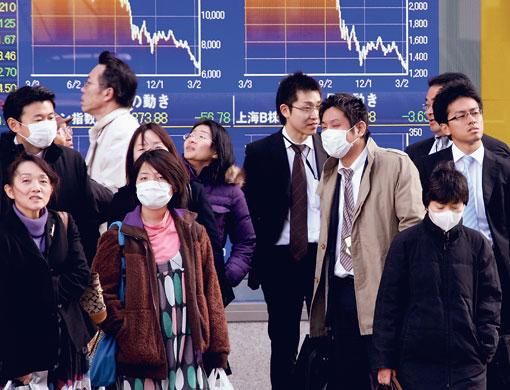Tokyo: Everybody, it seems, is wearing them. On trains, on the street, at parties. It is impossible to go anywhere in Japan this time of year and not notice - the Japanese love surgical masks and wear them just about everywhere they go.
This year's craze: the N95 model by 3M, a thick and nearly impregnable face mask with a noticeable nose groove and extra breathing space. The heavier-than-normal mask runs up to about 3,000 yen ($30) at stores.
There are other specialty types. Masks made for people with glasses. Masks designed not to smudge makeup. Kids' masks, with colourful cartoon characters such as Hello Kitty or Mickey Mouse. Models even advertise them in TV commercials - in one, a tall woman walks gracefully through the city, her bright mask shining at night.
Japan in the spring gets a double whammy of influenza germs and cedar pollen - leading to runny noses, watery eyes and coughing. The masks are primarily to protect against the pollen. But, perhaps even more importantly, they are a show of consideration for others by demonstrating that, if you are ill in public, at least you are trying to keep your germs to yourself.
"Japan is fastidious to the point of being obsessive," said Kyle Cleveland, a cultural sociologist who teaches at Temple University's Tokyo campus. "People are willing to acknowledge and recognise the value of not making their co-workers or classmates sick."
Not all agree masks do that, particularly regarding the flu.
Tom Lomax, a British surgeon at the Tokyo Medical and Surgical Clinic, does not recommend masks to his patients, who are mostly Western. He said the value of such a prevention strategy is difficult to measure because most information comes from companies that are marketing the product.
"Rather than being based on any hard scientific evidence, it's passed into the culture," Lomax said. "I think it reflects people's awareness that they're part of a group."
For pollen, however, the masks are a buffer against what all agree is a major problem. More than 25 million Japanese people - about one in five - suffer from pollen allergies, which became a national cause for concern after the Second World War, when the government subsidised the costs of planting scores of cedar trees in mountainous areas.
After the trees matured, the wind began spreading storms of pollen throughout the country, especially affecting densely packed cities. Now, the daily pollen count is part of the routine weather report.
Health companies have spun the hay fever problem into gold.
Sales for both long-lasting and disposable masks have sharply risen in the past three years.












